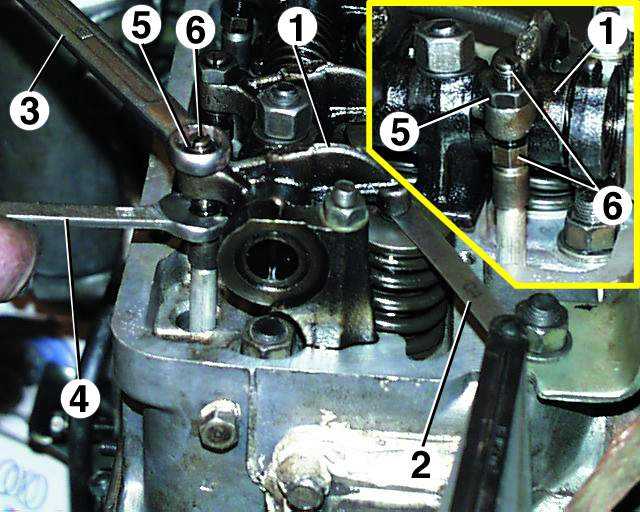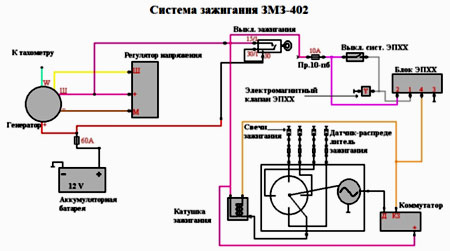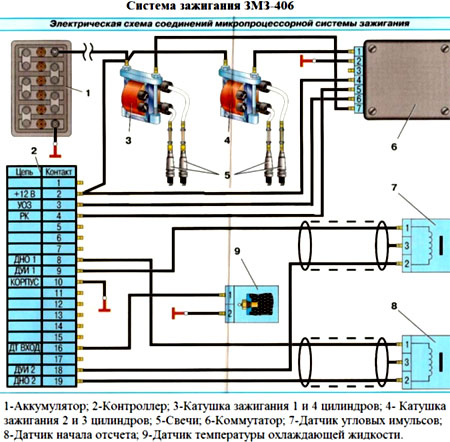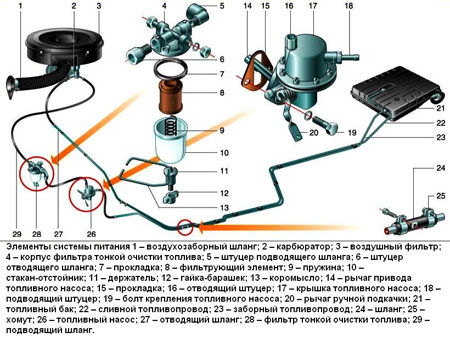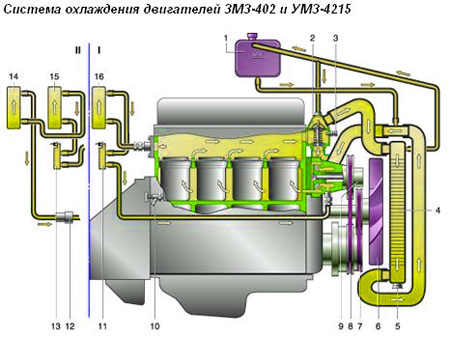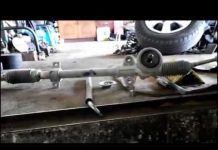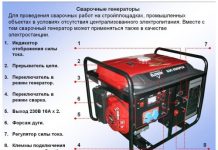The Gorky Automobile Plant produced the GAZ-3110 Volga sedan from 1996 to 2005. Production stopped long ago, but you can still find a lot of these cars on the roads of Russia; for their owners, the issues of operation, maintenance and repair of the GAZ-3110 "Volga" remain relevant. In the event of a malfunction, you can contact the workshop, but all the warranty periods for the car have long expired, any problems will have to be eliminated at your own expense. Therefore, many owners choose to carry out maintenance and repairs themselves.
During the trip, you should constantly monitor the condition of the car, monitor the readings of the devices. If you hear abnormal sounds, try to determine the cause and fix the problem. Do not allow the engine to run at maximum speeds for a long time, do not exceed the speed limit, especially on roads with poor coverage, this leads to rapid wear of the suspension. Try to anticipate the situation on the road, move smoothly, without sudden acceleration and braking.
If the maintenance time is exceeded, the units operate on contaminated liquids, their service life decreases. Avoid excessive wear on the brake pads, replace them if signs of wear appear (squeak when braking). A complete list and terms of routine maintenance are given in the instructions for the car.
If any malfunction occurs, it is necessary to determine what exactly failed. Sometimes this is immediately clear (for example, a flat tire), but often the source of the problem is not easy to find.
Very often the problems are associated with him. On the GAZ-3110 "Volga" they installed ZMZ-402 (carburetor), later ZMZ-406 (injection), cars with a diesel engine were also produced, but in very small quantities, no more than 150 units per year.
Various malfunctions of other units and assemblies are possible. Transmission and suspension repairs usually boil down to replacing defective parts. There are only two problems in the electrical circuits of gas 3110: there is no contact where it is needed, or there is where it is not needed. A joke, of course, but there is some truth in it. Repair consists in cleaning the contacts and replacing faulty devices, for example, light bulbs.
In the first place among the malfunctions is the oxidation of contacts in the system. The consequence of this is a break in the network and engine failure.
To check the ignition system, disconnect one of the high voltage wires from the spark plug and bring it to ground (any place on the block or body, stripped of paint) at a distance of 6–8 mm.
It is dangerous to hold the wire with your hands, reinforce it with available dry materials (preferably wooden). When cranking the engine with the starter, a spark should slip through. If not, troubleshoot the low or high voltage circuits. It is better to do this with the help of special devices (voltmeter, ohmmeter, special stroboscope). If they are absent, the low voltage circuit can be checked with an automotive light. Connect one of its contacts with a wiring to ground, the other - to the point of the circuit being checked.
If the light comes on, there is voltage. Do not forget that the electrical circuit after ignition is checked with the ignition on.Start on the battery and work your way down the low voltage circuit in sequence. If you find a point where there is no voltage, strip the ends of the wires and the connection surfaces. If this does not help, the point is in the wire or device installed in front of this point.
In the high voltage circuit, clean any dirt and wipe dry all wires. Make sure that their ends are in close contact with the sockets of the coil, distributor (for 402 engine) and spark plugs. If a breakdown to ground occurs somewhere, the ignition will not work normally. Sometimes such a malfunction is easier to identify in the dark (sparking is visible at the breakdown site). On the GAZ-3310 "Volga" with a 402 engine, additionally remove the central wire from the distributor cover and check it for a spark (similar to a spark plug).
There is no spark - the ignition coil is faulty, it cannot be repaired, it will have to be replaced. If there is a spark after the coil, but there is no spark on the spark plugs, remove the distributor cover, clean it from dirt, check the condition of the central electrode ("coal"), runner and contacts.
Another characteristic malfunction is poor contact with the "ground" of the wire coming from the battery. Symptoms of this problem are dim headlights after stopping the engine and the inability to start it (you can hear the click of the starter, but the crankshaft does not rotate). Disconnect the wire from the ground and strip the contact surfaces.
If you suspect a malfunction due to lack or poor fuel supply, make sure that there is gas in the tank. Some drivers notice such an elementary thing only after long attempts to find a fault in other places.
Sometimes this is due to a failure or poor performance of the fuel level sensor. If there is enough gasoline, make sure that it is supplied to the carburetor (for 402) or to the injectors (for 406 engine). A vapor lock can form in the gas lines (in the hot season), blocking the access of fuel. If this happens, put a wet rag on the fuel line to cool down, or just wait, the engine will cool down and the plug will disappear. In cold weather, water trapped in the fuel can freeze, the ice plug also does not allow gasoline to pass through.
On the 406 engine, check if you can hear the hum of the fuel pump when the ignition is turned on. If not, its fuse may have blown. Before replacing, try to find the cause, the location of the short circuit can be determined by the smoked wires.
When the starter is turned on, gasoline should be poured from the hose. If it doesn't, the diaphragm may be damaged or pump valves are stuck. Check for leaks of gasoline in the pipe connections. If air enters the system, the pump pumps it instead of fuel.
In the cooling system, overheating is the result of a malfunction. Main reasons:
The main problem for the bodywork is corrosion. The condition of the paintwork should be monitored and, if necessary, restored.
VIDEO GAZ-3110 is a Russian passenger car of the Volga family produced by the Gorky Automobile Plant. GAZ-3110 was produced in series from 1996 to 2005.
GAZ-3110 was a further modernization of the GAZ-31029 model with a complete replacement of all exterior body panels, including the roof panel, but excluding the doors and front fenders. In 1997, a limited "transitional" series was produced, complete with inner door skins, a front end of the body and wheels from the previous model. Initially, narrow bumpers made of black thermoplastic were installed on the car, since 2000 they have been replaced with bulky overhead fiberglass bumpers. The salon was completely renovated and, in general, began to meet the standards of inexpensive foreign cars in finishing.
On the GAZ-3110, a power steering was installed as standard, the steering gear was changed (3.5 turns of the steering wheel, instead of 4.5 as on previous Volga models), front disc brakes of the Lucas type, a continuous rear axle, a propeller shaft with an intermediate support, more low-profile 15-inch wheels 195/65, electro-corrector of headlights, oil cooler, quite rare on passenger cars, heated glass washer nozzles, dual-mode heating of the rear window. Since 2001, all Volgas have been painted at the new Hayden-2 painting complex. The new technology of priming and painting made it possible to use two-component metallic enamels and at the same time to increase the service life of the body. Since May 2003, the Volga has a front pivotless suspension.
Since 2004, the production of the GAZ-31105 sedan began, which is a deep restyling of the GAZ-3110, discontinued at the beginning of 2005. The production of the GAZ-310221 station wagon car continued in small batches on a separate conveyor line, in parallel with the GAZ-3102 model until December 2008. The station wagon version with "plumage" in the style of GAZ-31105 was produced to order.
The generally recognized drawback of the early GAZ-3110 Volga series was poor build quality and low body resistance to corrosion, subsequently improved, but the general obsolescence of the car design, especially in terms of active and passive safety, reduced the demand for Volga to a critical one. However, due to a number of popular consumer qualities (good endurance and capacity, combined with a reasonable price), the car has become quite common in Russia.
The GAZ 3110 model is a middle-class passenger car in a 4-door sedan body, which was first presented by the Russian automobile company GAZ (Gorky Automobile Plant) in 1996. This model, in fact, was a modernized version of its predecessor called GAZ 31029.
External distinctive features were new fenders, roof shape, hood, aprons, radiator grill. Only the doors remained the same. At first, GAZ 3110 cars were equipped with narrow black bumpers, and since 2000 they have been replaced with new modern bumpers, which began to be painted in body color. They gave the car a more impressive look due to the additional volume. A distinctive feature was the trunk lid, which opened from the bumper itself in order to facilitate the loading of things into the luggage compartment. In 2001, cars began to be painted and primed according to a new system, which made it possible to increase the service life of the body. There was also a special version of the GAZ 3110 for taxi services, which had a special coloring, preparation for a taximeter and interior trim made of easy-washable materials.
For the GAZ 3110 car, five engine options were offered: gasoline ZMZ-402.10 with a volume of 2.5 liters and a capacity of 100 hp; ZMZ-4021.10 with a volume of 2.5 liters and a capacity of 90 hp; ZMZ-4062.10 with a volume of 2.3 liters and a capacity of 150 hp; as well as turbodiesel power units GAZ-560 (GAZ 3110-600) and GAZ-5601 (GAZ 3110-601). Themselves turbodiesels were produced under the license of the Steyr company. The 3110 was fitted with a 5-speed manual transmission. The braking system included front disc and rear drum brakes.
The front suspension of the GAZ 3110 car was independent on wishbones with coil springs and included telescopic shock absorbers. The rear suspension was dependent, leaf spring with shock absorbers.
In 2003, the GAZ 3110 sedan underwent both some external changes and updates in terms of technical equipment. The car received a new grille, headlights, but they were rectangular as before. The taillights received built-in round reflectors, the locks received a central locking, and the door handles became lifting. As for the technical part, the car received a front pivotless suspension.
In 2004, the GAZ 31105 model came out, which later replaced the GAZ 3110 car, whose production was finally completed in the first quarter of 2005, completely giving way to 31105.
Dashboard (continuation)
Location of the block of switches on the console of the tunnel floor of the body
1 - switch for monitoring the serviceability of signal and indicator lamps of the instrument cluster. When you press any edge of the switch button, the control and warning lamps should light up 48 (see fig. Instrument panel), 50 , 55 and back-up warning lights about unfastened seat belts and overheating of the catalytic converter; 2 - switch for heating the windscreen washer jets (if there is a heating system). When you press a key, its backlight turns on; 3 , 4 , 5 , 6 - plugs for spare sockets for installation of switches for additional equipment.
Volga GAZ-3110, -310221 with 2.3i engines; 2.5. Device, service, diagnostics, repair. Illustrated guide About the book “Volga” GAZ-3110, -310221 with 2,3i engines; 2.5. Device, service, diagnostics, repair. Illustrated Guide "
A book from a series of multicolor illustrated DIY car repair manuals. The manual contains a detailed description of the structures of components and systems of GAZ-3110, -310221 vehicles with a ZMZ-4062 engine (2.3 l) with distributed fuel injection and carburetor engines ZMZ-402, -4021 (2.5 l). The sequence of disassembly and repair is shown in the photographs, provided with detailed comments. The Appendices contain tools, lubricants and operating fluids, lip seals, bearings, tightening torques for threaded connections, lamps, and electrical diagrams. The book is intended for drivers who want to repair a car on their own, as well as for service station workers.
On our site you can download the book “Volga” GAZ-3110, -310221 with 2,3i engines; 2.5. Device, service, diagnostics, repair. Illustrated Guide ”for free and without registration in fb2, rtf, epub, pdf, txt format, read a book online or buy a book in an online store.
Volga GAZ-3110 / GAZ-310221 with engines 2,3i / 2,5
Year of issue: 2010
In the sections devoted to the maintenance and repair of the car, the conditions for the work, the required tool, the time and complexity of the operation are indicated. Operations are shown in color photographs and provided with detailed comments.
The Appendices contain a list of lubricants and operating fluids, tightening torques for threaded connections, tools, lamps, and electrical equipment diagrams.
The book is intended for drivers who want to maintain and repair a car on their own, as well as for service station workers.
Volga GAZ-3110, -310221 with 2.3i engines; 2.5. Device, service, diagnostics, repair. Illustrated guide About the book “Volga” GAZ-3110, -310221 with 2,3i engines; 2.5. Device, service, diagnostics, repair. Illustrated Guide "
A book from a series of multicolor illustrated DIY car repair manuals. The manual contains a detailed description of the structures of components and systems of GAZ-3110, -310221 vehicles with a ZMZ-4062 engine (2.3 l) with distributed fuel injection and carburetor engines ZMZ-402, -4021 (2.5 l). The sequence of disassembly and repair is shown in the photographs, provided with detailed comments. The Appendices contain tools, lubricants and operating fluids, lip seals, bearings, tightening torques for threaded connections, lamps, and electrical diagrams. The book is intended for drivers who want to repair a car on their own, as well as for service station workers.
On our site you can download the book “Volga” GAZ-3110, -310221 with 2,3i engines; 2.5. Device, service, diagnostics, repair. Illustrated Guide ”for free and without registration in fb2, rtf, epub, pdf, txt format, read a book online or buy a book in an online store.
Gaz-3110 and -310221 - rear-wheel drive vehicles, predefined for use on tracks with a modernized surface.
The power unit is located under the hood at the front of the vehicle.
Gaz-3110 - passenger car, with a sedan body; Gaz-310221 is a cargo-passenger, with a “station wagon” body (the seats of the middle and rear row in the folded state represent the cargo platform).
Engines - four-cylinder, in-line vertical, four-stroke, gasoline, with a volume of 2.3 and 2.445 liters and a power of 90 to 145 hp.
The placement of the engine in the engine compartment is longitudinal.
a - places where the vehicle identification number is marked;
Today, do-it-yourself repair work on the GAZ 3110 is very often carried out, especially since all the necessary information can be easily found. Of course, there are some specific work that can only be carried out in a car service, for example, repairing a generator.
There are certain oil and coolant change intervals that must be followed in order for your vehicle to function properly. So, repairing radiators in most cases entails changing the coolant.
So, every ten thousand kilometers you need to change the engine oil. The coolant is changed every two years or every sixty thousand kilometers. The gearbox oil is changed with the same frequency. For example, repairing the rear axle will require an oil change in the crankcase without fail. By the way, the level of this oil also needs to be checked every twenty thousand kilometers. As for the brake fluid, it should be replaced with a new one every two years, regardless of the car mileage.
As already mentioned, a number of repairs can be carried out in a “garage” environment.These include, say, the repair of the exhaust system and the repair of the power steering. As for the power steering, most of the problems associated with the incorrect operation of this unit are caused by a malfunction of the power steering belt.
The belt is a very important part despite its small size. Basically, this part is replaced every fifty thousand kilometers, although in this case much depends on the conditions in which the machine is operated. When replacing the belt, it is very important to ensure the correct tension during installation afterwards. Also, you may not be guided by the recommended mileage, but periodically inspect the unit for defects.
By and large, this statement is true for all, without exception, automobile nodes. If something changes in the "behavior" of your car, you should immediately diagnose. For example, the repair of the front suspension, carried out immediately after the detection of the malfunction, will cost you less than if the first "bells" are ignored and the unit is completely out of order.
By the way, the repair of the suspension is very often carried out by the drivers on their own, since the assembly and disassembly of this unit is usually not difficult. Of course, if the diagnosis of a malfunction is difficult, then you should contact the professionals. As for work with the suspension, there is one important nuance: if some elements are very worn out, then they must be replaced with new ones. In this case, fixing or welding is not allowed.
The same applies to such manipulations as stove repair. Very often, the reason for the incorrect operation of this unit is a leaked radiator. It is also preferable to replace this part with a new one, and not engage in "invention".
Of course, not all repair work can be done independently. For example, the repair of the generator, as well as the repair of batteries, should be trusted by specialists, since in these cases professional tools, special devices, and test stands are needed.
To date, car repairs, including gearbox repairs, are successfully carried out at almost all service stations. If the driver is faced with the need to repair the GAZ 3110 with his own hands, then only if he wants to save money. In this case, correct troubleshooting is only possible with proper diagnostics.
For example, a gearbox repair may be necessary in the following cases:
noise in the gearbox,
difficult gear shifting,
oil leak.
The chassis is perhaps the second most important component of the car (after the engine). And chassis malfunctions create a lot of trouble for motorists. Naturally, malfunctions are a fixable thing, you just need to know exactly how fixable.
So, you have purchased a Volga (GAZ-3110). You drove home on it, boasted to family and friends. You have decided to whom and where you will make a debut visit for your four-wheeled partner. And a day later, they found chassis malfunctions of different complexity. What to do?
Let's say right away: there is no need to panic, even if the need to repair the car caught you for the first time. You can easily do without inviting an employee of the nearest service station. Because this article will provide you with some useful tips for prompt repairs.
Finding malfunctions and repairing the running GAZ 3110 is not so impracticable. The simplest thing to do is check the tire pressure and, if it is low, inflate the tires. Next, make sure that the joints on the steering shaft-countershaft-steering gear section are serviceable. If there are faults in this part, usually tighten the tie bolts or change the intermediate shaft.
Be sure to research the pendants. It may be necessary to tighten the nuts and bolts there as well. Maybe another suspension is already needed. And with it - a new flange and steering gear. At the same time, see if there is enough fluid in the power steering system, and tighten the drive belt.
It will not hurt to check the wheel balance. If the result is negative, the wheel bearings (or even the wheels themselves) must be replaced.
Does the car go unevenly on the road, leading you to the side? As soon as you can, examine the spring, the brakes, the front toe angle, and the steering mechanism.
On the way, you find out that the steering wheel is tight. Most often, the matter is in a small amount of lubricant in the rods, hinges, and the entire mechanism. Lubricate them. Does the steering wheel return poorly to its original position? The point, again, is the lack of lubrication in the steering gear. Hinges or shaft may be seizing. Lubricate them too.
Does the steering become unstable when braking? Here the matter is worse: it only means the need to replace the "guilty" part (wheel bearing, caliper, spring, discs). And even a considerable body repair shines.
By the way, about the body. It does not need to be overloaded. Otherwise, you will have a suspension draft, and then you will have to change the shock absorber strut.
A few more words about the suspension strut. Its malfunction (wear) affects the operation of many parts of the Volga. In addition to suspension sludge, it can cause body vibrations, too soft / too hard driving, warped tires, poor vehicle handling in general.
We did not talk about all possible malfunctions. Alas, the format of the article only allows us to summarize: the repair of the GAZ 3110 chassis (and any car too) is not so economical, although not so difficult. Remember this, and your iron vehicle will not forget to pay back with effective and long service.
I have been looking for a Kama Sutra for my car for a long time. I found several options in the internet, downloaded it, looked ... It seems that they all deserve attention. I decided to post it here, maybe it will come in handy for someone. Everything is poured into the people, to make it easier to download than all kinds of deposits, lethal ...
GAZ-3110 and -310221 are rear-wheel drive vehicles designed for use on roads with improved coverage. The engine is located under the bonnet at the front of the vehicle.
The title of the main sections:
Year of issue: 2007
Description: This manual contains information on the maintenance and repair of GAZ-3110 Volga vehicles. The description of the repair process for each operation is illustrated with detailed photographs, materials have been selected for the design of vehicle units and systems. Basic recommendations for operation are given: what you need to have in the car while traveling, how to prepare the car for departure, run in a new car and operate it during the warranty period. Typical malfunctions that cause car failure on the road are described in detail, methods of finding their causes and elimination are recommended. The repair methods were selected based on the use of a standard set of tools in a garage, and the photographic material was prepared in the process of disassembling and assembling the car by highly qualified auto mechanics.The repair manual can be useful to all motorists - from beginners to professionals who perform car repairs of any complexity on their own. Information: Engines ZMZ-4062, ZMZ-402, ZMZ-4021. Multimedia manual on a licensed disc. All photographs are in color.
Manual car repair and operation Renault 16 views
Manual Toyota Car Service and Maintenance 13 views
BMW Error Codes 12 views
Auto-tools, instructions, manuals for the repair and maintenance of cars 12 views
Fuse and Relay Box Geely MK Cross 11 views
Reset service intervals for Renault 11 views
CITROEN C3 2001-2011 Petrol / Diesel Repair and maintenance book 11 views
Manual for the repair and operation of Suzuki cars 10 views
Fuse and relay box Nissan Primera P12 2002 - 2007 10 views
Location of the diagnostic OBD connector in Opel 9 views
Description of the device and interaction of components, units and assemblies of the Volga GAZ-3110 car is illustrated with detailed diagrams, views, sections. Each illustration is accompanied by the characteristics of the unit, an explanation of its work. The list of positions of parts included in the assembly is given. All drawings are made in a multicolor design. During the production process, Volga cars are constantly being improved, therefore, individual components and assemblies may slightly differ from those described in the album. The album is intended for car owners, car mechanics and mechanics, students of schools, colleges and universities, as well as students of driver training courses.
Russian language
Purpose, device, maintenance and repair of the Russian passenger car of the "Volga" GAZ-3110 family. Heating and ventilation system. Malfunctions, main causes and their elimination. Diagnostics of the car air distribution system.
Students, graduate students, young scientists who use the knowledge base in their studies and work will be very grateful to you.
Posted on
1. Purpose, device, maintenance and repair
1.1 Purpose and device
1.2 Maintenance, malfunctions and repairs
2. Applied tools and materials
3. Organization of the workplace
4. Occupational health and safety
GAZ-3110 is a Russian passenger car of the Volga family produced by the Gorky Automobile Plant. GAZ-3110 was mass-produced from 1997 to 2005. GAZ-3110 was a further modernization of the GAZ-31029 model with the replacement of part of the outer body panels, including the roof panel, but excluding the doors and front fenders. In 1997, a limited "transitional" series was produced, complete with inner door skins and front end of the body from the previous model. Initially, narrow bumpers made of black thermoplastic were installed on the car, since 2000 they have been replaced with bulky, overhead plastic bumpers. The salon was completely renovated and, in general, began to meet the standards of inexpensive foreign cars in finishing.
On the GAZ-3110, a power steering was installed as standard, the steering gear was changed (3.5 turns of the steering wheel, instead of 4.5 as on previous Volga models), front disc brakes of the Lucas type, a continuous rear axle, a propeller shaft with an intermediate support, more low-profile 15-inch wheels 195/65, electro-corrector of headlights, oil cooler, quite rare on passenger cars, heated glass washer nozzles, dual-mode heating of the rear window. Since 2001, all Volgas have been painted at the new Hayden-2 painting complex. The new technology of priming and painting made it possible to use two-component metallic enamels and at the same time to increase the service life of the body. Since May 2002, the Volga has a front pivotless suspension.
Since 2004, the production of the GAZ-31105 sedan began, which is a deep restyling of the GAZ-3110, discontinued at the beginning of 2005.The production of the GAZ-310221 station wagon car continued in small batches on a separate conveyor line, in parallel with the GAZ-3102 model until December 2008. The station wagon version with "plumage" in the style of GAZ-31105 was produced to order.
The generally recognized drawback of the early GAZ-3110 Volga series was poor build quality and low body corrosion resistance, which were subsequently improved [, but the general obsolescence of the car design, especially in terms of active and passive safety, reduced the demand for the Volga to a critical one. However, due to a number of demanded consumer qualities (good endurance and capacity in combination with a reasonable price), the car has become quite common in Russia, in particular, many taxi companies have traditionally continued to equip their fleet with Volgas. GAZ-3110 were exported to a number of countries, in particular, to pre-war Iraq.
1. Purpose, device, maintenance and repair
1.1 Purpose and device
The heating and ventilation system of the car is designed to ventilate the passenger compartment with a warning flow of fresh air, and in cold weather - and to heat the passenger compartment, windshield and front door windows with warm air heated by liquid from the engine cooling system.
The heating and ventilation system consists of: a main heater (Fig. 1.), an air distribution system (Fig. 2.) and an additional heater (Fig. 3.).
1 - radiator lining; 2 - heater radiator; 3 - heater casing; 4 - bottom flap; 5 - axis of the central flap; 6 - air intake box damper; 7 - air intake box; 8 - rods of the air damper drive; 9 - electric fan wheel; 10 - fan motor; 11 - upper plate of the electric motor; 12 - electric motor cover; 13 - bottom plate of the electric motor; 14 - lower flap lever; 15 - heater tap; 16 - heater control panel.
Rice. 2.Air distribution system
1 - left air duct; 2 - electric fan switch; 3 - left air duct for blowing the glass of the door; 4 - left branch pipe for blowing the windshield; 5, 10 - cabin ventilation pipes; 6 - upper flap drive handle; 7 - knob for switching the ventilation-heating mode; 8 - heater tap handle; 9 - right branch pipe for blowing the windshield; 11 - right air duct for blowing the glass of the door; 12 - right air duct for interior ventilation; 13 - heater radiator outlet hose; 14 - heater radiator supply hose.
Rice. 3.Additional heater
1 - casing cover; 2 - heater casing; 3 - heater radiator; 4 - bracket; 5 - flange gasket; 6 - impeller; 7 - electric motor flange; 8 - rheostat; 9 - cap; 10 - electric motor; 11 - fan nut; 12 - heater bracket.
1.2 Maintenance and repair
1.2.1 Maintenance
The following components are diagnosed:
Autonomous heater control unit
Adjustable fuel pump
Two-way valve in the cooling system circuit
Maintenance of the auxiliary heater consists in its periodic inspection.
· If coolant leaks at the hose connections, tighten the hose clamps. Leakage of liquid from the heater radiator casing indicates a radiator leak; in this case, it must be removed and repaired or replaced.
Removal of the radiator is carried out in the following order:
· - drain part of the coolant from the engine cooling system (about 5 liters);
· - disconnect the hoses from the radiator pipes of the additional heater and drain the remaining coolant;
· - unscrew the two screws securing the plastic fence and remove the fence;
· - disconnect two spring clips 4 (Fig. 10.27) and remove the cover 1 of the casing;
· - remove the radiator 3 from the casing 2.
· The removed radiator must be checked for leaks in a water bath at an overpressure of 1 atm. Repair leaks in the radiator by pressing the bending antennae as indicated for the radiator of the main heater.
Video (click to play).
Malfunctions, causes and their elimination are shown in Table 1.

